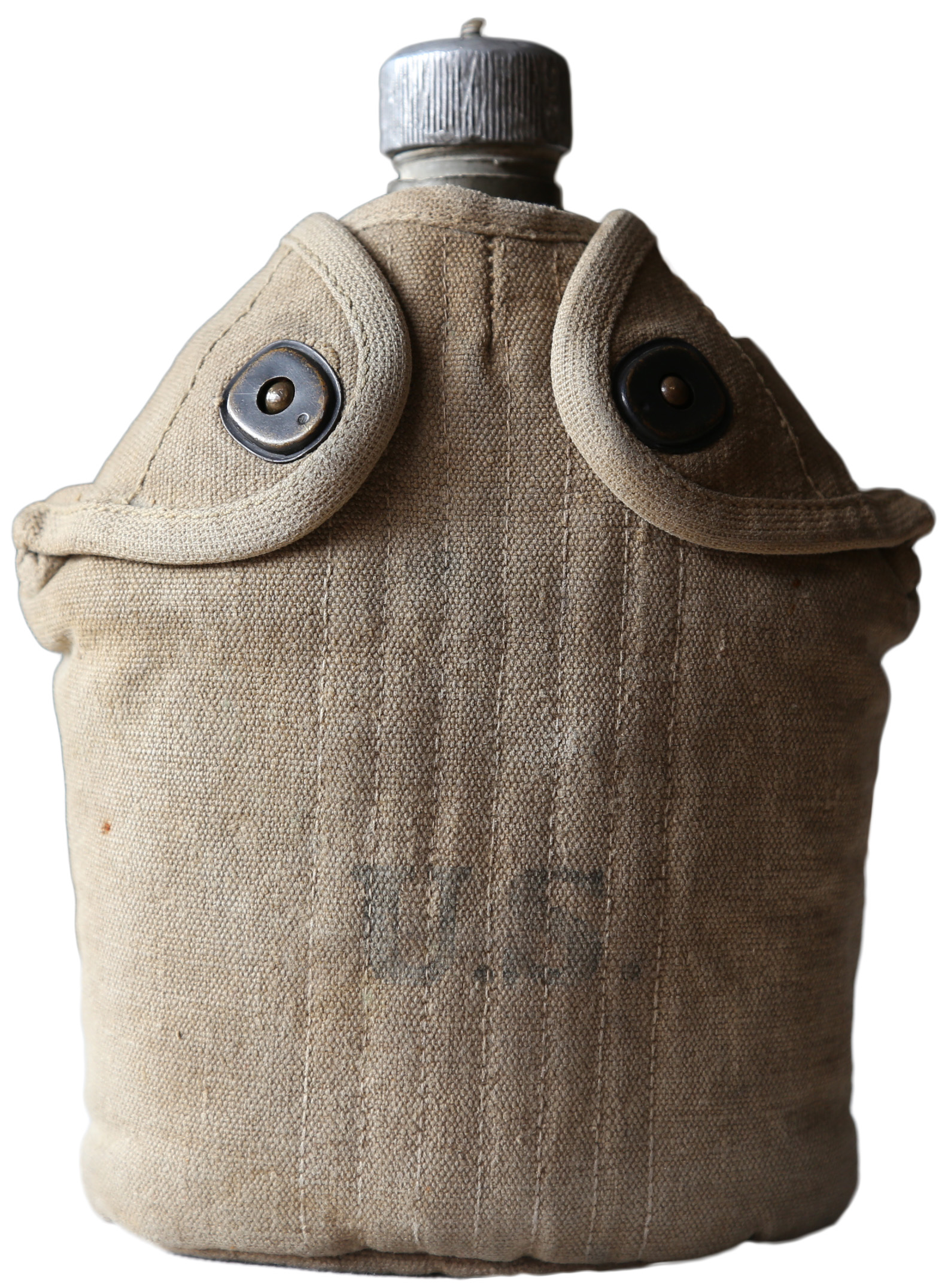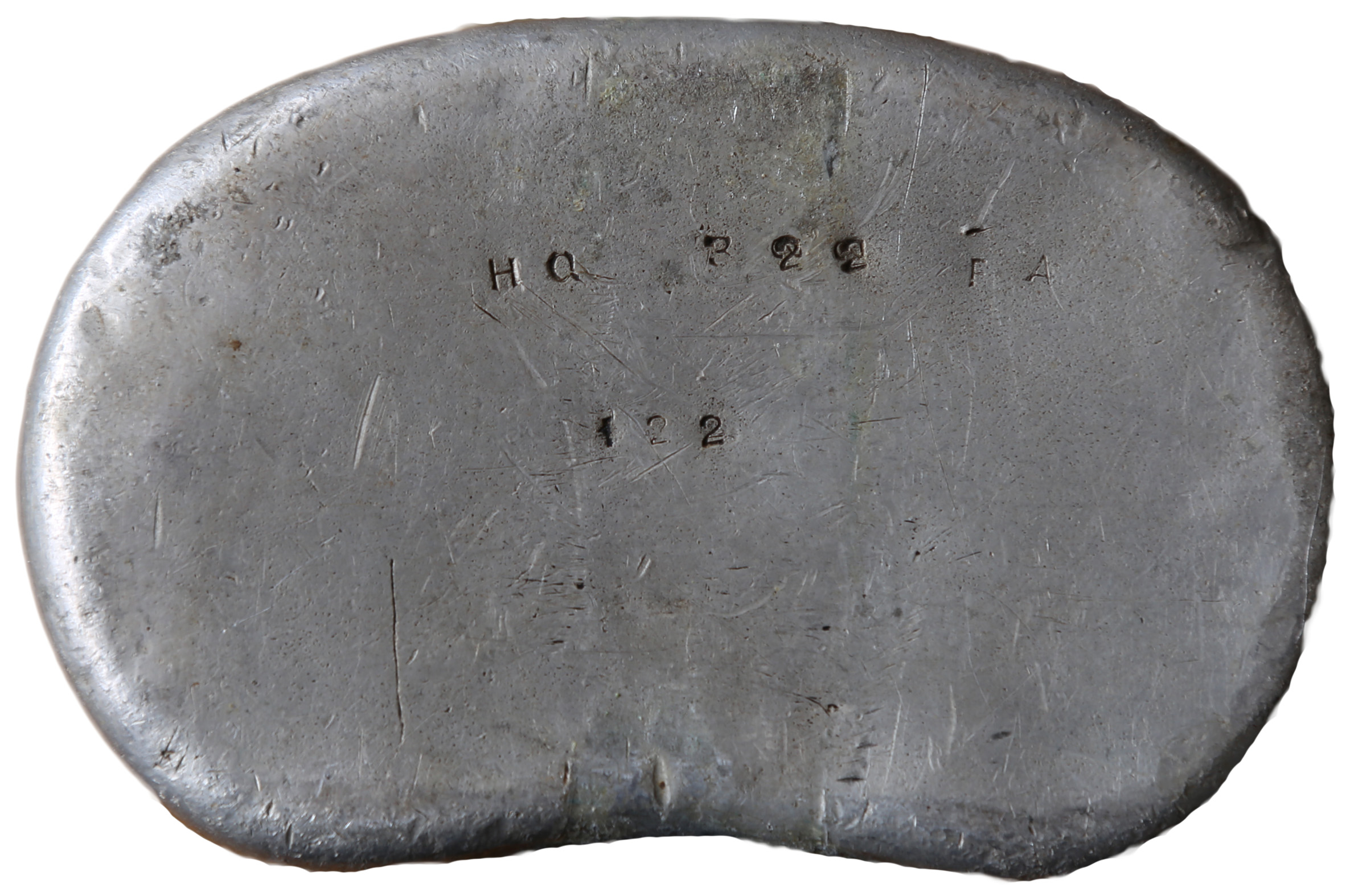WW1 Canteen
322nd Field Artillery
The item featured here is a US Army M1910 canteen as issued during World War One. The canteen-cover is made by ......................... (post spring of 1917 cover with the lift the dot fasteners). The canteen is B.A. Co. 1918. Canteen cups produced between 1910-1916 will not have dates, as this one does not. The cover has wear and stains. One tiny rip by the shoulder edging material. Wear to the belt hook webbing. The canteen is pretty dented up and fits very tightly in the cup. The cup has 'HQ 322 F.A. and 122' into the bottom.
WW1 Canteens
The M1910 canteen and cup were made of aluminum. The canteen could hold one quart of water and the date and manufacturer could be found on the back. The canteen cup had a handle that could be folded out so that it could be used to cook food or boil water. The canteen fit into the canteen cup, and both would slide into the canteen cover. The canteen covers were insulated, and had two eagle snap buttons or lift the dot fasteners if manufactured after the spring of 1917. The cover had blackened brass wire hangers so that it could be hung from grommets on the belt. The covers are marked "U.S." and dated on the back or the inside flap.
322nd Field Artillery
The story of the 322nd United States Field Artillery Regiment began in the summer of 1917 at Fort Benjamin Harrison, outside of Indianapolis, Indiana. There, as part of the officer training program, future officers trained intensively in all aspects of modern war, including artillery. When the men finished their program in August and commissioned as lieutenants, many were sent to Camp Sherman, outside of Chillicothe, Ohio, where a training camp for Ohioans drafted under the Selective Service Act of 1917 would soon be ready. On September 5, 1917, the first draftees arrived at Camp Sherman.
At Camp Sherman the 322nd had trained with and been part of a single division, the 83rd 'Ohio' Division. The division travelled to France as a group, but once in France, General Pershing and the American Expeditionary Force decided to break apart the 83rd. Three infantry regiments were converted to depot regiments and trained replacements for combat divisions. The War Department sent one regiment, the 332nd, to Italy to bolster the Italians in their fight against Austria. The 83rd Engineers and Signal Troops were attached in time to the III Corps and did not serve in a division. The 83rd Division’s artillery brigade, including the 322nd, remained in tact and served their role as combat artillery on the Western Front, though attached to different divisions. When they arrived in July their artillery training continued.
Taken out of action only temporarily to rest and resupply, the 322nd was soon again fighting on the western Front in support of US troops advancing in the Meuse-Argonne. Though each US division had on paper its own artillery brigade, in practice artillery was slower to move and resupply, and was often detached from the infantry. The 322nd was able to fight in support of many divisions during the Meuse-Argonne, including at times the 37th “Buckeye” Division, which consisted of Ohio National Guard soldiers. By the end of October, the 322nd found itself again attached to and supporting the 32nd Division. It served with the 32nd until the Armistice went into effect on November 11, 1918.


Canteen-cup marked 'HQ 322 FA'
122